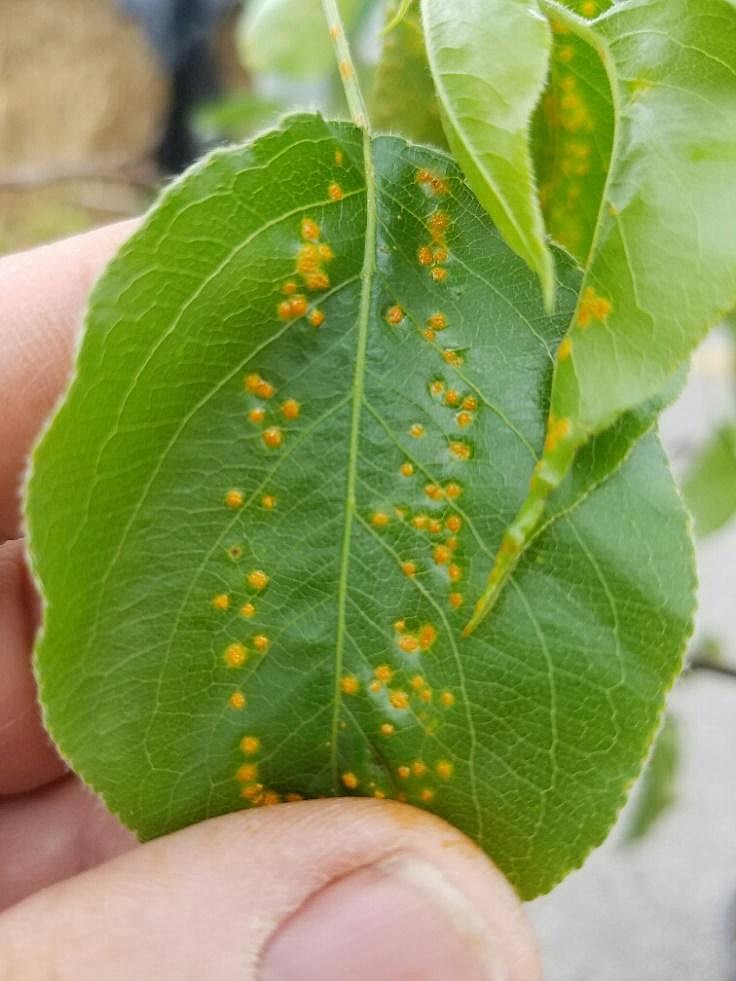Q. This picture is from the Aristocrat Ornamental Pear tree. We have five trees and all have this problem with about 75 percent of the leaves affected. Any idea what it is and will a fungicide work on it?
A. This is some type of rust. There are three types of rust common to cedars and an alternate host (apple, quince and Hawthorne), all which have the potential to afflict pear. There is also another rust commonly referred to as "pear trellis rust," so I sent the photos to University of Missouri's diagnostic clinic to see if the type of rust could be identified. Here's the response I received their director:
"One can't tell the different rusts apart until they make the spore structures on the undersides. From what I've seen on pear trellis rust, the spots are rather large. However, those spots are pretty young so tough call. I am seeing plenty of rust on the ornamental pears. Also, I did see a lot of cedars with sporulation on the twigs over the weekend. But I think all the types of rust can cause that. Die-back will occur where they see the gelatinous sporulation on the twigs. Good idea to get it marked for pruning in the winter."
As with most diseases, it is best prevented. This is tricky in that if it never occurred before, how would you have known to spray? We don't have the same weather pattern every spring, so is tough to know what to do. While you can't make the current spots go away, if the disease is still spreading, you could treat with a fungicide to limit further spread. Spectracide Immunox is labeled for control of rust on flowering pears in the ornamental plant section.
If twigs get notably infected, prune them out in the fall and burn or remove them from the area.
Q. I seeded veggies like carrots, lettuce, spinach and beets back at the end of March. Not much came up. What went wrong and what should I do?
A. The cold wet weather we had for two weeks had some hard rains. This packs the ground, and the seeds can suffocate or rot as they struggle to emerge through packed soil, which may get crusted when it dries (further inhibiting emergence). Your only option is to reseed, but the last date advised for most cool season vegetables has passed. Only loose leaf lettuce, radish, Swiss Chard and turnips are advised after April 20, but even these are best if seeded by May 1.
Three common warm season vegetables you can seed instead are green beans, zucchini and sweet corn.
Q. I think I'm seeing peach leaf curl; can I spray anything to control it now? If so, what?
Well you missed the time to control this disease. It catches many home gardeners off guard, as you only can get control when the plants are dormant. Either of the following two active ingredients provide control, Copper Sulfate or chlorothalonil, with the latter being commonly available as Daconil Broad Spectrum Fungicide. If you have a history of the problem, apply once in the late fall after the leaves have dropped and a second time in late February or early March before the buds swell significantly. One application should be sufficient if the problem hasn't occurred in the previous year.
Q. Is it too later to put down crabgrass preventer?
A. While it is after the preferred window to apply (April 1-15), it will still help limit the germination of crabgrass. So go ahead and apply, ASAP.

